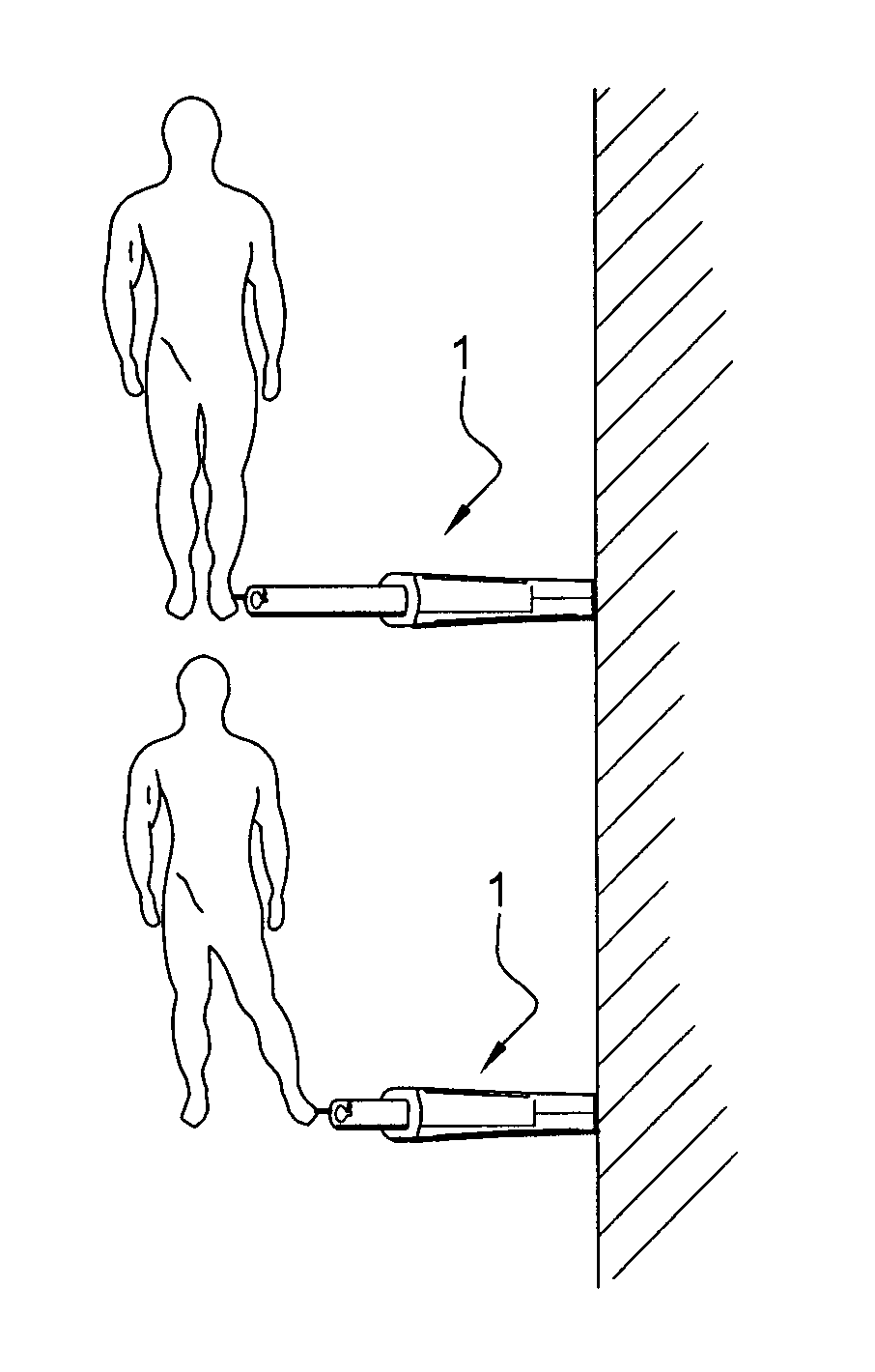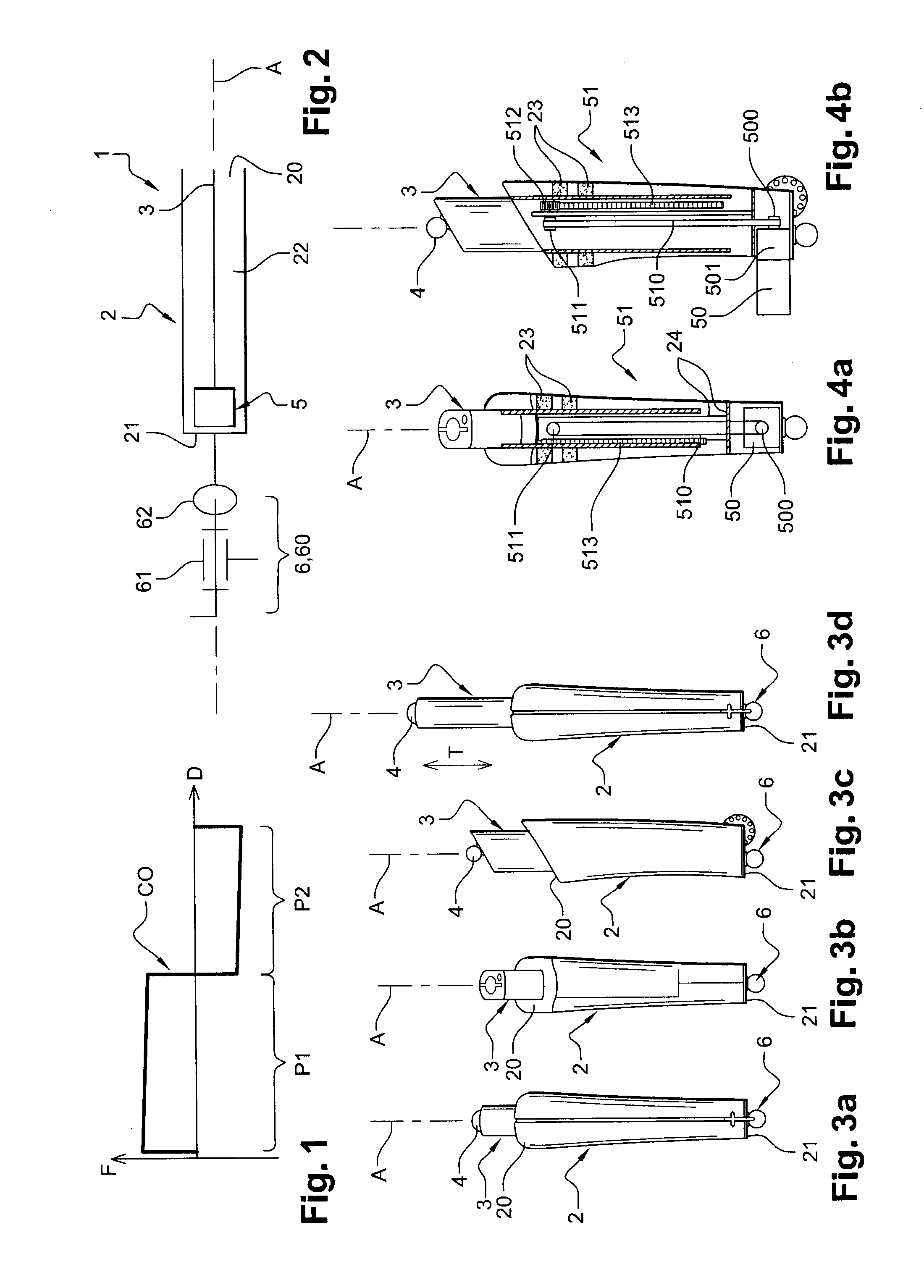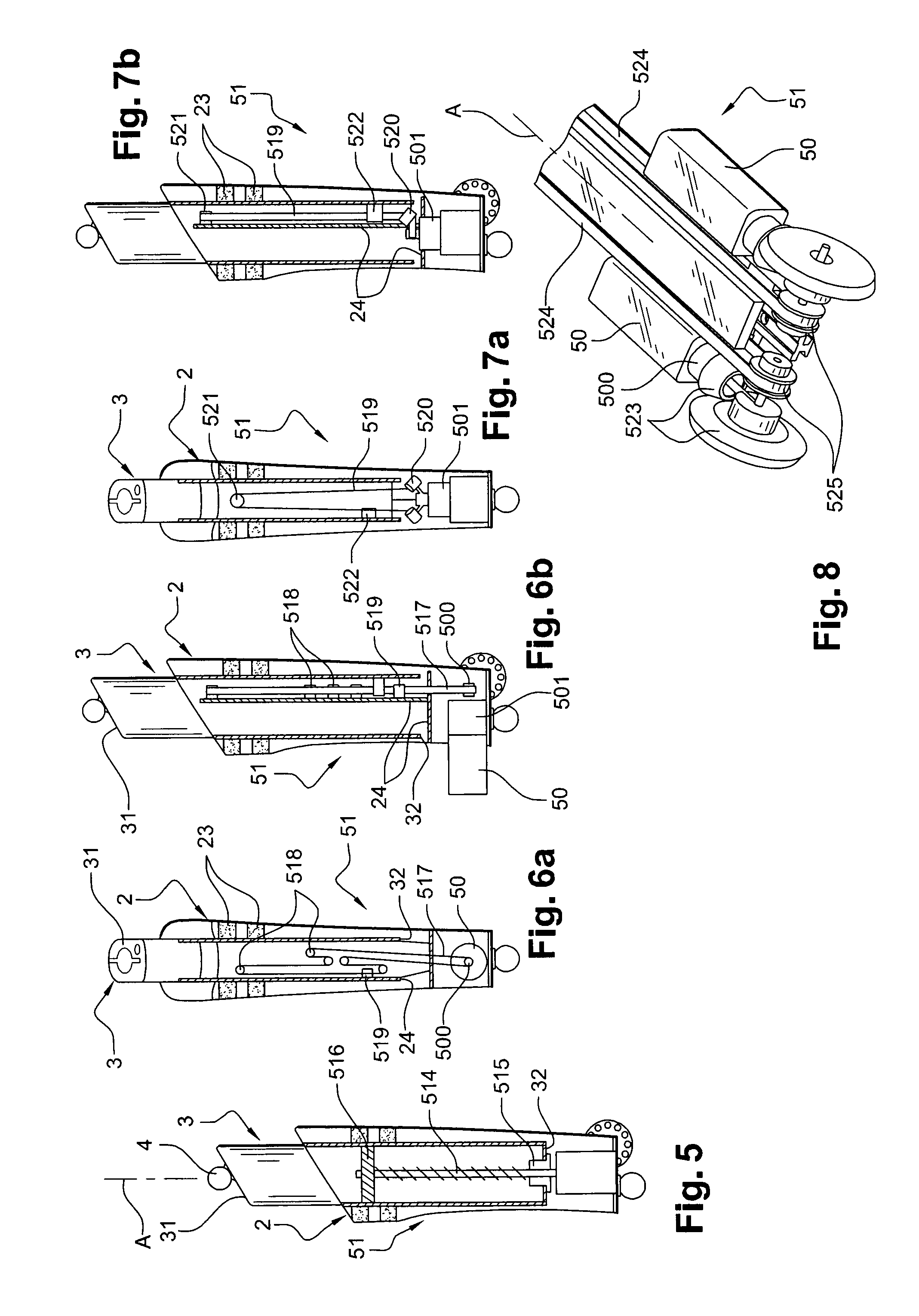Muscle and/or joint exercise apparatus
a joint exercise and muscle technology, applied in the field of muscle and/or joint exercise apparatus, can solve the problems of hardly being parameterized, reducing the choice of movement of the limb, and heavy apparatuses
- Summary
- Abstract
- Description
- Claims
- Application Information
AI Technical Summary
Benefits of technology
Problems solved by technology
Method used
Image
Examples
first embodiment
[0281]In the first embodiment illustrated in FIGS. 4a and 4b, the converting means 51 comprise:[0282]a belt 510 rotatingly connected to the rotary motor shaft 500 of the motor 50 on the one hand, and to a pulley 511 fastened to a base 24 integral with the body 2 on the other hand, said base 24 partially extending over the length of the body 2 inside the arm 3 and said belt 510 going through said base 24;[0283]a toothed wheel 512 rotationally integral with the pulley 511 and fastened to the base 24; and[0284]a rack 513 meshing with the toothed wheel 512 and fastened to the arm 3.
[0285]Thus, the rotation of the motor shaft 500 rotatingly drives the pulley 512 via the belt 510, and said pulley 511 rotatingly drives the toothed wheel 512 which by turning translationally displaces the arm 3 via the rack 513. In this embodiment, the motor shaft 500 extends along an axis perpendicular to the main axis A. As illustrated, the motor 50 may protrude from the body 2 via a corresponding opening ...
second embodiment
[0286]In the second embodiment illustrated in FIG. 5, the converting means 51 comprise:[0287]a threaded shaft 514 (e.g. of the ball screw type) rotatingly driven by the motor 50, thereby being the output shaft of said motor 50 and going through the second end 32 of the arm 3 via a bearing 515; and[0288]a nut part 516 fastened to the arm 3 and equipped with a threaded orifice cooperating with the threaded shaft 514.
[0289]Thus, the threaded shaft 514 and the nut part 516 together form a screw / nut system for transforming a rotational movement into a translatory movement: the rotation of the threaded shaft 514 translationally drives the nut part 516 which translationally drives the arm 3. In this embodiment, the threaded shaft 514 extends along the main axis A.
third embodiment
[0290]In the third embodiment illustrated in FIGS. 6a and 6b, the converting means 51 comprise:[0291]a belt 517 rotationally connected to the motor shaft 500 extending along an axis perpendicular to the main axis A;[0292]rollers 518 extending along respective axes perpendicular to the main axis A and guiding the displacement of the belt 517 so that said belt has a long planar portion, between two rollers, which is parallel to the main axis A along the arm 3, there being a total of five of said rollers 518 here which are fastened to a base 24 integral with the body 2 and partially extend over the length of the body 2 inside the arm 3;[0293]a connecting piece 519 integral both with the arm 3 and the long planar portion of the belt 517.
[0294]Thus, the rotation of the motor shaft 500 rotatingly drives the belt 517 around the rollers 518, so that the connecting piece 519 is translationally driven between the two rollers 518 delimiting the long planar portion of said belt 517, thereby tra...
PUM
 Login to View More
Login to View More Abstract
Description
Claims
Application Information
 Login to View More
Login to View More - R&D
- Intellectual Property
- Life Sciences
- Materials
- Tech Scout
- Unparalleled Data Quality
- Higher Quality Content
- 60% Fewer Hallucinations
Browse by: Latest US Patents, China's latest patents, Technical Efficacy Thesaurus, Application Domain, Technology Topic, Popular Technical Reports.
© 2025 PatSnap. All rights reserved.Legal|Privacy policy|Modern Slavery Act Transparency Statement|Sitemap|About US| Contact US: help@patsnap.com



